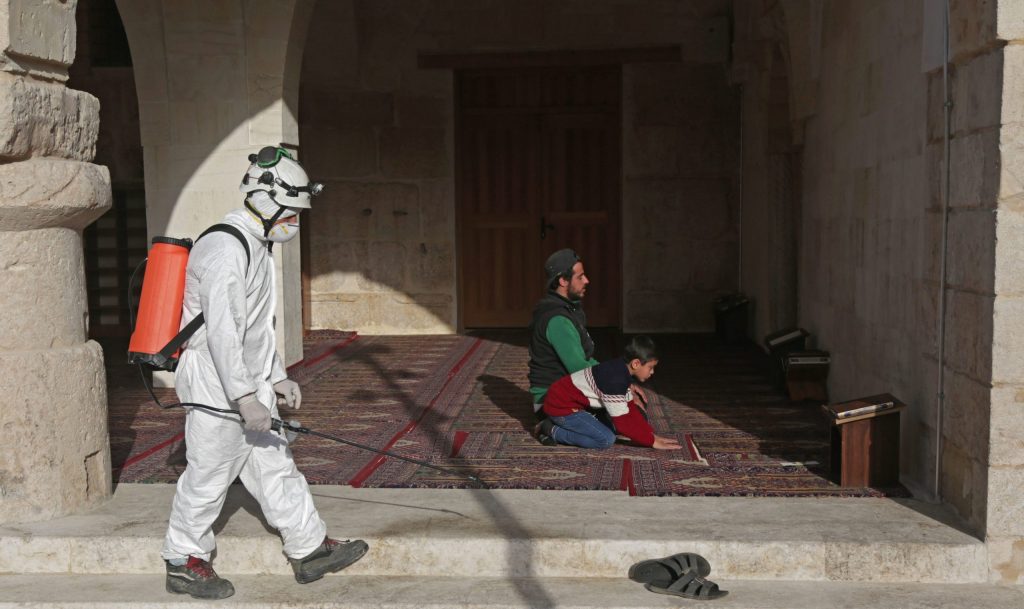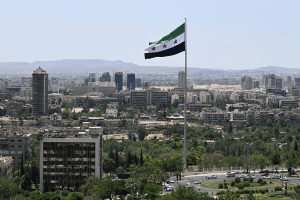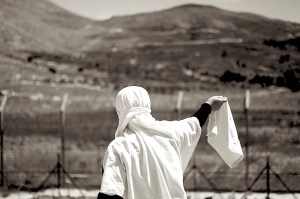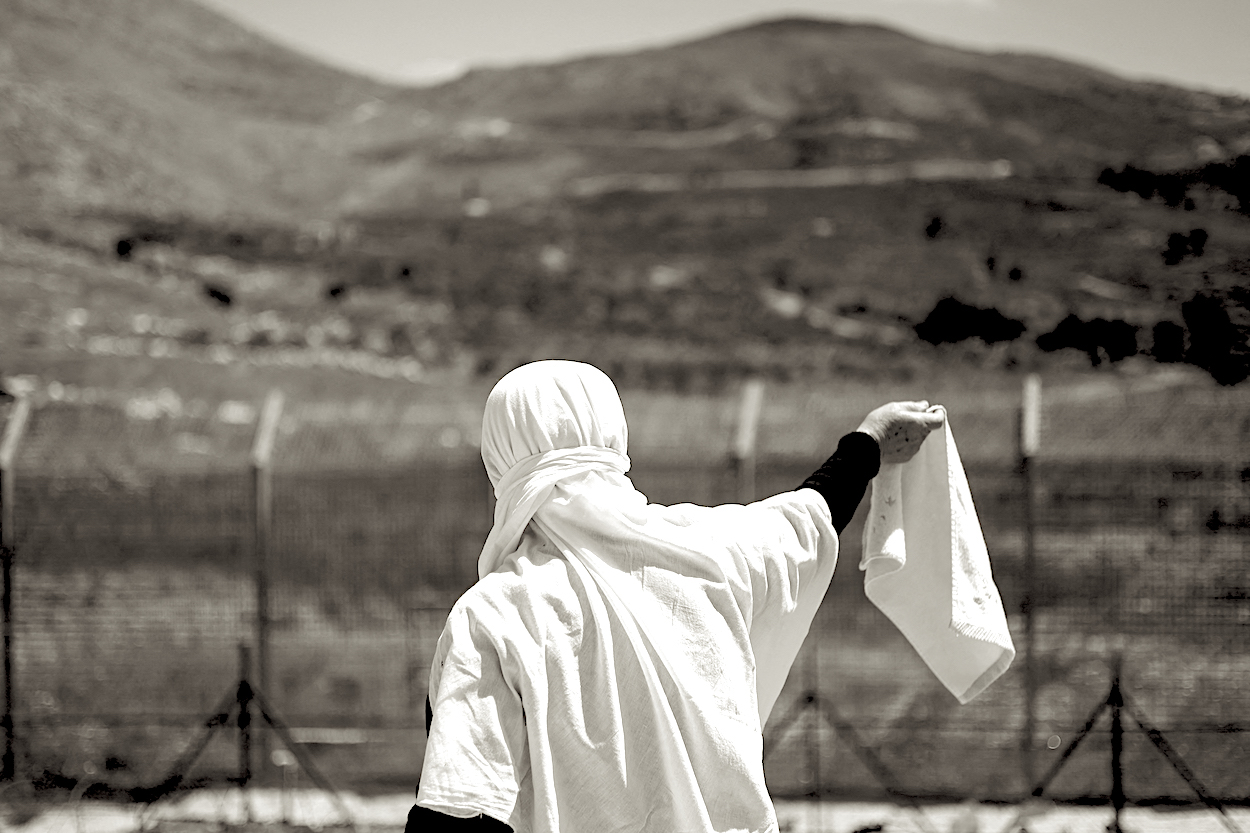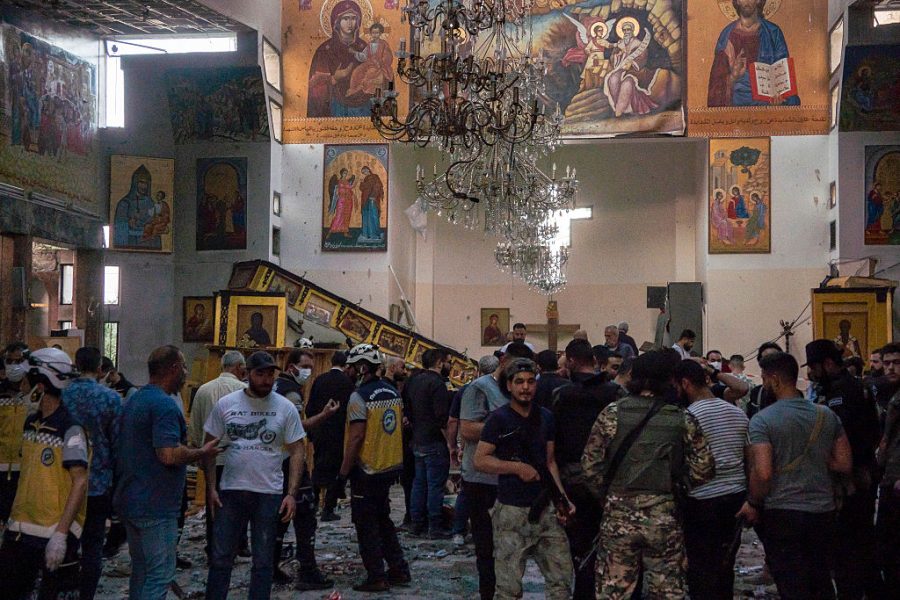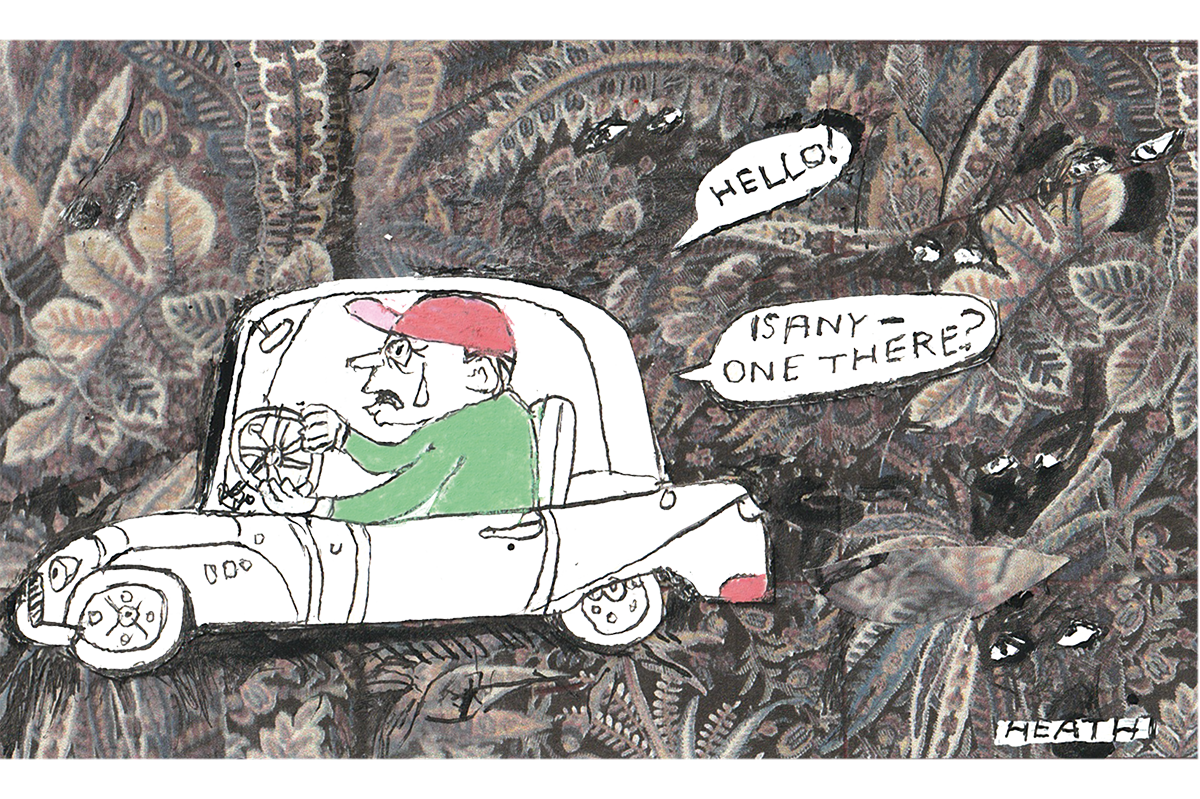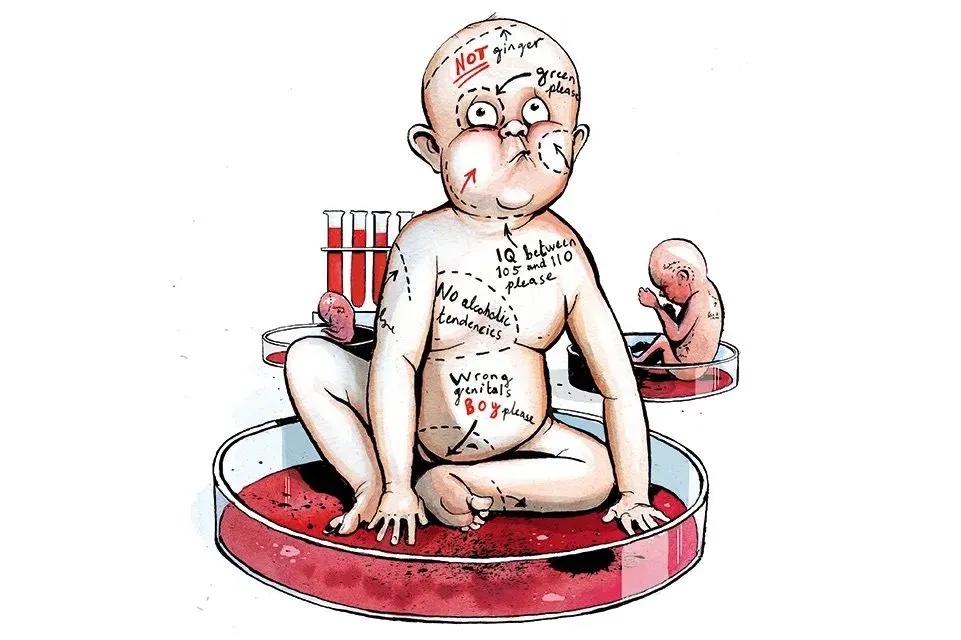There is no place on earth less prepared for a coronavirus outbreak than a Syrian refugee camp. In hindsight, the deliberate targeting of homes and hospitals in Idlib, displacing over a million people from their houses, seems even more heinous now that it has left northwest Syria utterly defenseless to the impact of the virus.
The only saving grace is that the hell-on-earth created here by the brutal Idlib campaign means that very few people are incentivized to visit and bring the disease with them. While the regime-held south confirmed its first case on Sunday, there are a few suspected cases in the rebel-held northwest, but virtually no ability to test and confirm, thanks to the wholescale and deliberate destruction of healthcare services in Idlib. In northwest Syria, there are just 1,937 hospital beds to serve a population of three million people. The medical facilities that are running are already under-equipped and at overcapacity. For the millions who are displaced, having a home to self-isolate in is a luxury they can only dream of.
But it is only a question of when, not if, this disease will arrive. Many of us in NGO circles are bracing for a second wave of this pandemic, which will ravage the world’s 25 million refugees and 40 million internally displaced people.
Refugee camps are pretty much the same throughout the world: they are densely populated, with as many tents and temporary shelters as possible crammed into a small space. It’s the rule, not the exception, to have between 8 and 12 people living under one tent. Tiny paths, three or four feet wide (just big enough to get a motorcycle down) are the only pathways to escape, meaning people live on top of each other. Most Syrians in these camps struggle to access enough clean water to drink, let alone wash their hands. Medical care is rare and inadequate, as often host communities try to restrict the healthcare refugee camps receive so they don’t get too comfortable and return home. Coronavirus will spread like wildfire here. Idlib as a province has become densely populated, as people throughout the nine-year Syrian conflict have fled here when their hometowns have been under siege, meaning an area the size of Delaware now houses several million people.
In the camps, you have a disproportionate amount of old people and people with health conditions picked up as a by-product of the conflict or the dirty squalor they are forced to live in. Many families, without work, who rely on NGO donated food packs to eat, already have to sell part of their packs in order to buy medicine.
NGOs like Syria Relief are giving tents and organizing home sterilization cleaning, distributing hygiene kits, providing better sanitation and medical services, but we are just holding back the tide. Once the coronavirus hits here, it will be devastating. You would hope that it would perhaps remove the incentive for military actors in the Syrian conflict to keep fighting, instead it will just worsen the humanitarian catastrophe.
It has exposed the alternate reality that the one and a half million Syrian refugees in neighboring Lebanon live in. COVID-19 has been widespread throughout Lebanon: some attribute this to the close links the Shia community has with Iran, however it is yet to ravage the tent ghettos that Syrian refugees are forced to live in.
Aid agencies are faced with a dilemma: do they send staff to help? Refugees and internally displaced peoples are the most vulnerable people on the face of the planet, in desperate need of help, yet it is almost certain that an outbreak in a refugee camp will be introduced, accidentally, by an aid worker. Some aid organization have had to become more preoccupied in protecting their staff, sending foreign nationals home.
The UN and national governments who were involved in attempting to broker a peace deal in Syria or fund the aid effort now have their own internal humanitarian crises to deal with. Donors are much less likely to be generous when they are reeling from the ongoing global economic earthquake.
Charities and NGOs who do not specialize in Syria but operate some projects here are also shifting their funding and fundraising efforts away from Idlib and towards helping people prepare at home instead. From a marketing point of view, it makes perfect sense; coronavirus has completely eclipsed everything, not least Syria. For a charity’s marketing departments, coronavirus — with an immediate impact on the doorsteps of potential donors — is a much easier ‘sell.
Yet Syrians are once again getting forgotten about. They have had to fight to survive a fierce and unrelenting conflict, which has been conducted in a manner where civilians have been the target. The aim all along has been to achieve victory through terror. Many have also frozen to death or died due to illnesses picked up during the winter months after fleeing their homes. Now, the feared COVID-19 wave is the next huge threat to their life and they are powerless to protect themselves. The capacity to deal with humanitarian suffering in the refugee camps is already at breaking point, the coronavirus will break it.
Charles Lawley is an aid worker and head of advocacy for Syria Relief. This article was originally published onThe Spectator’s UK website.



